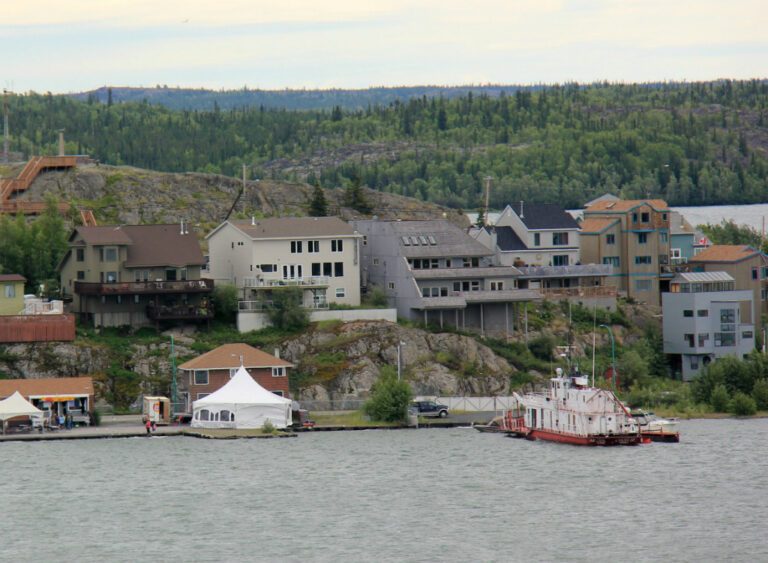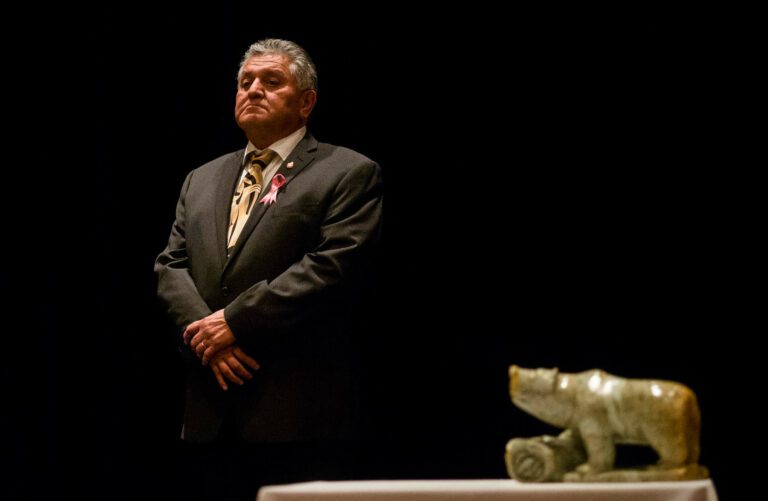On EDGE | ANALYSIS
The GNWT is now projecting a $32-million operating deficit by the end of the 18th Assembly.
If nothing changes, over the next five years revenues are expected to drop by 1.7 percent, mostly due to poor mining prospects and reductions in federal transfers, while expenditures are forecast to grow by 4.05 percent, according to new numbers released today by the GNWT’s Department of Finance. That means by 2018/19, more money will be going out the door than coming in, seriously challenging the government’s ability to service its growing debt, spend on infrastructure and continue funding programs and services at current levels.
The gloomy fiscal outlook isn’t entirely due to the current economic slowdown. Since the global crash of 2008, all Canadian provinces and territories have slowly crept back to pre-recession growth levels; all, that is, except the NWT, which now has to contend with cuts in federal transfer payments and dismal commodity prices on top of already sluggish growth.
While the top-level bureaucrats at today’s press conference wouldn’t speculate on ways to improve the government’s fiscal situation — with tax increases or cuts — it’s clear that something’s gotta give if the GNWT is to stay out of the red and retain its ability to replace aging infrastructure across the territory.

New Government Numbers: Austerity Ahead?
What’s on the table?
One option is trying to increase revenues. This could be through diversification; though, as the report states, “we have to be realistic about expectations. In the short to medium term, mining will be the mainstay of our economy.” Or through tax increases, or new taxes. But again, there’s a caveat: “We have to recognize we have a very small tax base, so any tax measures we consider have to recognize that it would likely have cost of living impacts on our residents and possibly curtail our economic growth,” says Kelly Bluck, the GNWT’s Director of Fiscal Policy
Another option is to drive up debt levels to keep the operations end of things in the black. That said, the GNWT’s total debt level is already forecast to increase to over $1 billion by 2019/20, leaving less than $300 million in wiggle room before hitting the $1.3 billion cap. The higher debt levels get, the more expensive they are to service, and the GNWT’s Fiscal Framework (a guiding fiscal policy document) outlines that, “debt service payments cannot exceed 5% of revenues.”
Cuts to expenditures will mostly likely come on the operations side of things, which could run the gamut from hiring freezes to job cuts to reductions in program spending.
This leaves the option of cutting expenditures. Capital expenditures are already forecast to drop significantly over the coming years; with a high of $331 million in 2016/17 (mostly due to the Mackenzie Valley fibre line) dropping to a “conservative” $85 million in 2019/20.
Based on the Fiscal Framework, that amount can’t really drop much more without MLAs changing the policy; right now it’s mandated that at least 50 percent of a given year’s operating surplus go towards infrastructure, to help pay for the $3.6 billion in needed roads, bridges, hospitals and schools, as well as put money away for proposed mega-projects like the Mackenzie Valley Highway.
It seems fair to conclude, then, that unless MLAs decide to change the current Fiscal Framework, cuts to expenditures will mostly likely come on the operations side of things, which could run the gamut from hiring freezes to job cuts to reductions in program spending. This could turn into a political landmine, given the ongoing contract negotiations between the GNWT and the Union of Northern Workers.
As Sandy Kalgutkar, Deputy Secretary of the Financial Management Board, put it, “Our historic expenditure growth has been quite high and at times exceeded our revenue growth, and one of things we should do going forward is start linking those better.”
There is a hope that the federal government will restore some, if not all, of the $33 million in annual transfer payments that was cut in December following a rejigging of federal policy. Discussions are ongoing, and Bluck is “confident we’ll have some kind of solution.”
But, “even with the restoration, we would not have any flexibility to increase our capital plan, and we’re still in a fairly significant deficit and overall debt position,” says Kalgutkar. And the GNWT would still be “one or two emergencies away from putting us back into a deficit position.”
Likewise, the GNWT’s widely-publicized hope to get 2000 more people to move to the territory, bringing per capita federal transfer funding with them, isn’t promising. The GNWT is now projecting flat population growth, says Bluck, which will actually lead to a loss in federal formula financing if the Canadian population in general continues to grow (the funding is based on a population ratio between Canada and the NWT).
Despite all the worrisome numbers, Kalgutkar did suggest that, “with careful adherence to our fiscal responsibility policy, I think we could see our way out of it and return to a fairly strong financial position.”
Now it remains for MLAs to decide how much “fiscal responsibility policy”— read austerity measures — they can stomach.







